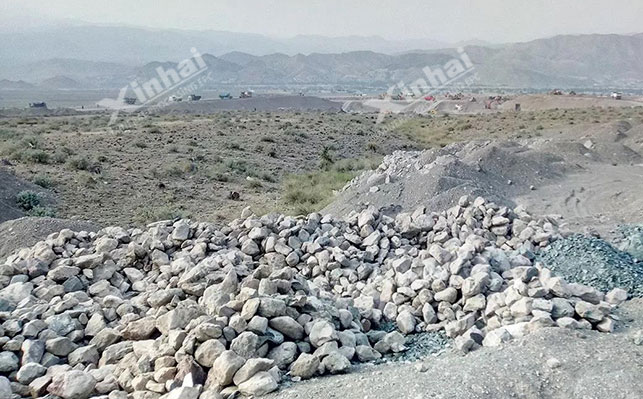Silicomalachite is a type of copper silicate with variable moisture content. Copper is in the form of Cu2+, and its mineral composition is extremely complex. The flotation of silicomalachite is extremely difficult. Over the years, China has made significant progress in the flotation process of silicomalachite through continuous research and experimentation. Let's learn about this copper oxide mineral - silicon malachite - and its flotation method together in this article.

The reason why silicon malachite is difficult to choose is due to its complex structure, which has the following characteristics:
1. Malachite is a mixture of crystalline copper silicate dispersed in amorphous silica hydrogel. It is a definite mineral with characteristic fiber structure and belongs to orthorhombic system. The uncertainty of chemical composition, uneven distribution of copper on the surface, strong hydrophilicity and porosity on the surface are the main reasons for the difficulty in flotation and the variability of flotation properties of silicon malachite.
2. Silicomalachite belongs to a secondary copper bearing mineral in terms of composition and morphology, and its typical true crystal structure is very rare. It is associated with minerals such as red copper and blue copper, and contains complex impurities.
As a special mineral type of copper oxide, silicon malachite also has problems such as high oxidation rate, uneven distribution of fine particles, mixed oxygen and sulfur, coexistence of multiple minerals, and low floatability. Conventional flotation processes are difficult to achieve breakthroughs.
In terms of the selection of flotation reagents for silicon malachite, relevant technical workers have conducted beneficiation experiments, including four sets of tests: sulfurization xanthate flotation, flotation with fatty acid and amine collectors, flotation with thiol collectors, and flotation with organic chelating agents. For the convenience of everyone's understanding, the complex experimental process has been omitted here, and the conclusions are presented as follows:
1. Sulfidation xanthate flotation is an early and widely used method, but due to the oxidation of sulfur ions and the easy detachment of the sulfide film, it is difficult to obtain satisfactory results using this method;
2. Silicomalachite can be flotation using fatty acid and amine collectors, but it is difficult to apply in production until effective inhibition of gangue minerals is achieved;
3. Although thermal activation and acid activation have good effects, they are costly and have a significant impact on the environment, making practical applications difficult to achieve;
The most promising method is to use thiol collectors and copper chelating agents for flotation, and the key to the flotation of silicon malachite is to find new copper chelating agents as collectors and activators.
As a type of oxidized copper ore, silicon malachite has always been a flotation problem. For many years, Xinhai has been constantly exploring and exploring the beneficiation process and reagent selection of silicon malachite. The flotation of silicon malachite usually adopts direct flotation method, using chelating agent neutral oil to assist in completing the flotation of silicon malachite.
Chelating agent neutral oil flotation method
This method refers to the use of a chelating agent and neutral oil to form a collector to complete flotation, which is often used for difficult to select copper oxide (such as silicon malachite). It not only has good selectivity and collection effect, but also ensures high separation indicators, reduces reagent consumption, and chelating agents also have selective inhibition effect.
However, the cost of chelating agents is relatively high. Currently, chelating agents used include octyl substituted basic dyes such as malachite green, potassium octyl oximate, benzotriazole and neutral oil emulsifiers, N-substituted iminodiacetic acid salts, condensation compounds of polyamines and organic halides, etc.
In short, the determination of any beneficiation process should be based on beneficiation test data. In the selection of flotation process for silicon malachite, the ultimate beneficiation recovery rate and concentrate grade should be the goals, and suitable flotation processes and reagents should be selected to achieve twice the result with half the effort.